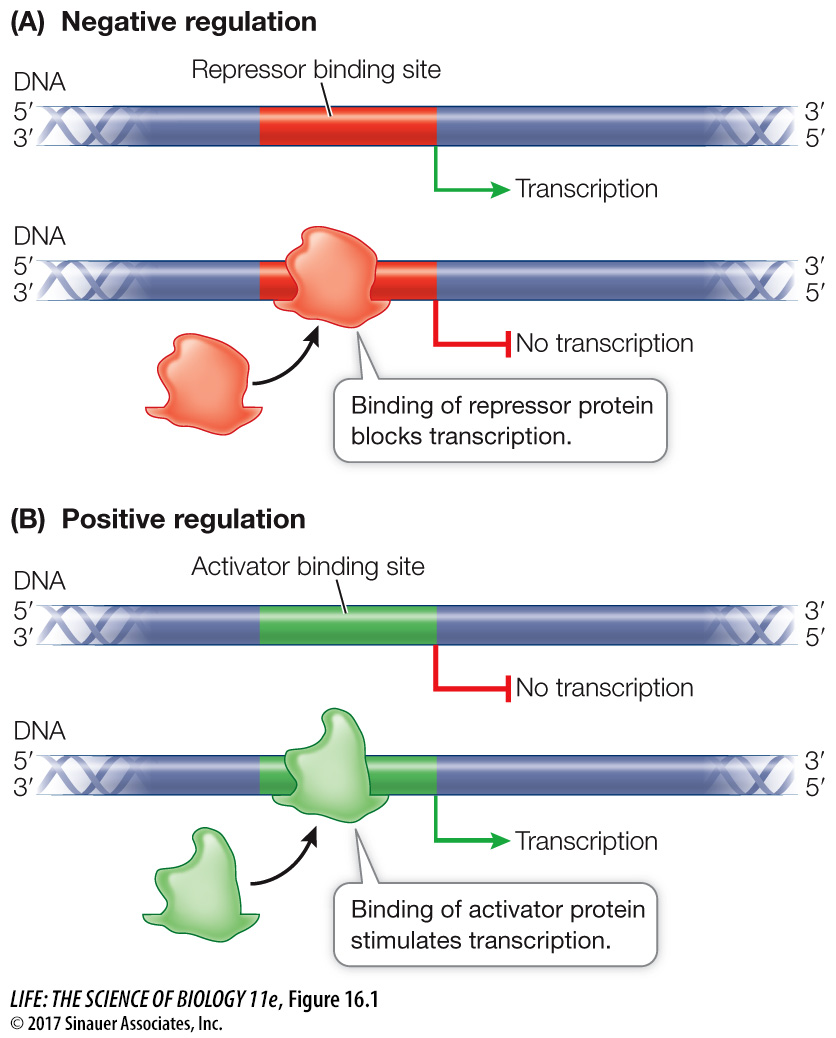key concept 16.1 Prokaryotic Gene Expression Is Regulated in Operons
337
Prokaryotes conserve energy and resources by making certain proteins only when they are needed. The protein content of a bacterium can change rapidly when conditions warrant. Based on what you learned about gene expression in Chapter 14, you might suggest several ways in which a prokaryotic cell could shut off the supply of an unneeded protein. The cell could:
decrease the rate of transcription of mRNA for that protein;
hydrolyze the mRNA after it is made, preventing translation;
prevent translation of the mRNA at the ribosome;
hydrolyze the protein after it is made; or
inhibit the function of the protein.
Whichever mechanism is used, it must be both responsive to environmental signals and efficient. The earlier the cell intervenes in the process of protein synthesis, the less energy it wastes. Selective blocking of transcription is far more efficient than transcribing the gene, translating the message, and then degrading or inhibiting the protein. While all five mechanisms for regulating protein levels are found in nature, prokaryotes generally use the most efficient one: transcriptional regulation.
focus your learning
The lac operon is an example of an inducible operon regulated by a repressor protein.
Sigma factors provide another type of transcriptional regulation by directing RNA polymerases to specific promoters.
Gene expression begins at the *promoter, where RNA polymerase binds to initiate transcription. Note, however, that in a given cell at a given point in time, not all promoters are active. This observation suggests that gene transcription must be selective. The “decision” regarding which genes to activate involves two types of regulatory proteins that bind to DNA: repressor proteins and activator proteins. In both cases, these proteins bind to the promoter to regulate the gene (Focus: Key Figure 16.1):
focus: key figure

Question
Q: Could a gene be under both positive and negative regulation?
Yes. There can be multiple binding sites for regulatory proteins at the promoter region.
In negative regulation, binding of a repressor protein prevents transcription.
In positive regulation, an activator protein binds DNA to stimulate transcription.
*connect the concepts A key DNA sequence involved in regulation is the promoter, where transcription begins and various regulatory proteins bind. Learn details about proteins at the promoter in Key Concept 14.3.
You will see examples of these mechanisms, or combinations of them, as we examine regulation in prokaryotes, eukaryotes, and viruses. We’ll focus first on a regulatory system for the use of the sugar lactose.